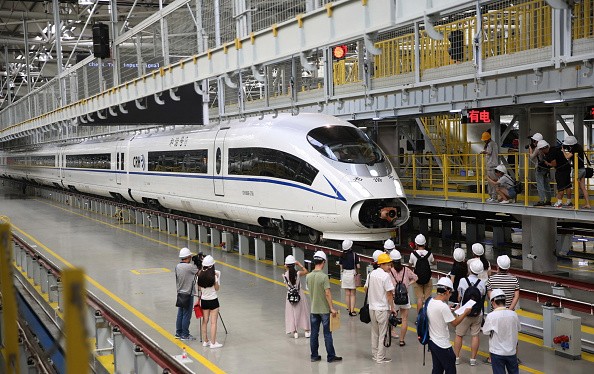A migrant worker in Guangdong Province used to spend 16 hours traveling home to southwestern Yunnan Province on a lumbering old-fashioned train to make it home for the Spring Festival.
Thanks to the Shanghai-Kunming high-speed railway, what used to be a 16-hour trip was shortened by half.
Workers can now go home to their families in time for Spring Festival twice faster and more comfortable for just over 100 yuan ($14.5) more than the slow, old-fashioned train but “totally worth it.”
Last year, over half of the more than 2.7 billion passenger trips on railroads were made on bullet trains.
Apart from the speed, bullet trains are equipped with adjustable seats, power sockets, efficient, toilets, and Wi-Fi connections.
Some trains offer pre-order meals from a menu of varied bentos, dumplings and chicken roll, steamed stuffed buns with a delivery.
What’s more, passengers can now buy tickets online or by using their mobile phones.
According to data compiled by the International Union of Railways and the European Railway Agency, China’s rail network, with the world’s largest fleet of bullet train, has the world’s best safety record.
They also score high in punctuality--98.8 percent depart on time and 95.4 percent arrive on time in 2015.
The 40-day Spring Festival, or the Chinese New Year, is the most important, highly anticipated festival in China as well as neighboring countries.
People travel long distances to return to their hometowns to attend family reunions and visit relatives and friends. Schools in China get a month off, and universities even more just to give people enough time to be with their families.
Conde Nast Traveler reported 10 fastest trains in the world, and that includes China’s Shanghai Maglev (267 mph) and Harmony CRH38OA (236 mph), which ranked number one and two, respectively.
They were followed by Italy’s Trenitalia Frecciarossa 1000 (220 mph), Spain’s Renfe AVE (217 mph), Germany’s DeutscheBahn ICE (205 mph), Europe’s Eurostar e320 and TGV (200 mph), Japan’s Hayabusa Shinkansen E5 (200 mph), Europe’s Thalys (186 mph), Japan’s Hokuriku Shinkansen E7 (161 mph), and America’s Amtrak Acela Express (150 mph).



























